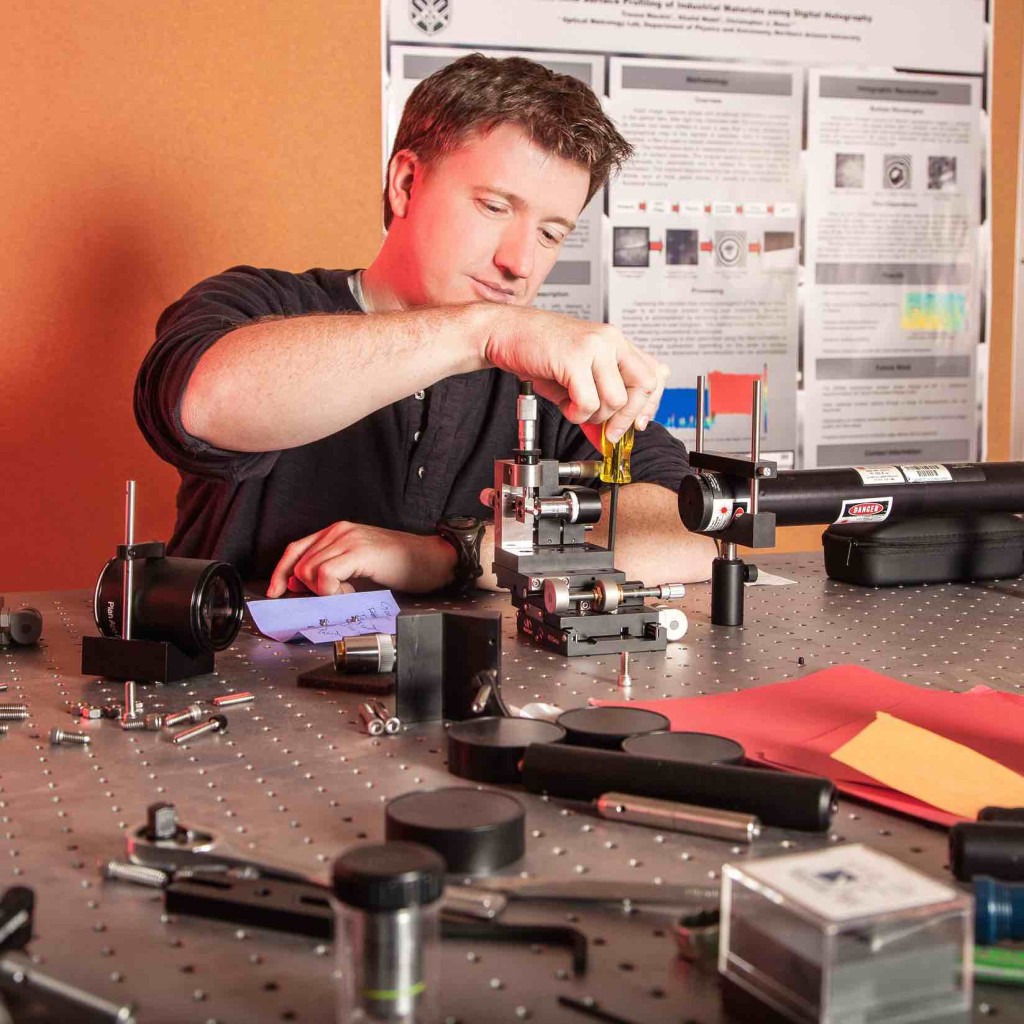One day, crime scene officers will take a bullet’s cartridge, make a three-dimensional image of the cartridge fingerprint and immediately match the gun with other crimes committed with the same firearm. By doing this process in the field, forensic investigators could save time and reduce potential evidence contamination.
Assistant professor and physicist Christopher Mann developed the technology using optical topology and creating an outcome that adds accuracy to forensic ballistics.
“The way it is done now is there is an examiner looking at pictures of the back of two shell casings through a microscope and saying the striations and other markings look exactly the same,” Mann said. His use of 3-D technology can provide the actual size and depth of the striations, solid evidence for use in the legal process where two-dimensional technology is often challenged in court.
In Mann’s lab, an optical interferometer turns the two-dimensional image of a bullet’s casing into a 3D image. The image can reveal the gun’s manufacturer, the model and the fingerprint unique to the individual gun.
While a patent is expected for Mann’s invention, he said the technology is still in its early stages. “In the future, I imagine that law enforcement agencies would have their own version of this instrument in their offices and in the long term, there will be a portable device that could be brought to the crime scene,” Mann said.
The technology is relatively affordable, said Mann, costing an estimated $50,000 compared to other forensic instruments costing upward of $1 million. “It is very cost effective and very powerful in terms of the information you get from it,” Mann added.



